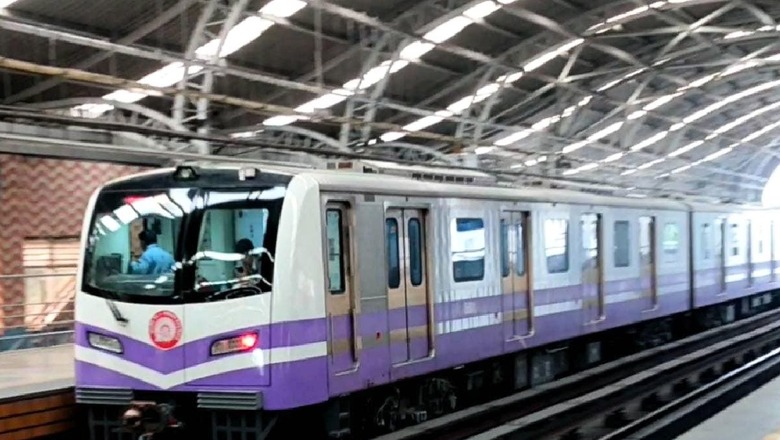
views
Kolkata Metro is set to join the elite metro systems of London, Moscow, Berlin, Munich and Istanbul, which have composite aluminium third rail instead of those made of steel.
Third rail is live rail that provides electric power to a train through a conductor placed alongside the rails.
In Kolkata Metro, the power to the rake is supplied to rolling stock at 750V DC through steel third rail.
The Third Rail Current Collector (TRCC) made of steel and fitted on the metro rake collects the electricity from third rail — a process that is ongoing for the last 40 years.
“Kolkata Metro Railway has now decided to use composite aluminium third rail in all the upcoming corridors being undertaken for construction along with retro fitment in existing corridor with steel third rail. With this Metro Railway, Kolkata would become the member of the elite club of London, Moscow, Berlin, Munich and Istanbul Metro which have also shifted from steel third rail to aluminium third rail,” the railway ministry said in a statement on Wednesday.
Kolkata Metro has floated a tender for the replacement of the existing third rail to cover the section between the Dumdum and Shyambazar stations in the first phase.
In the second phase, work would be taken up from Shyambazar to Central and J D Park to Tollygunge. In the third phase, the section between the Mahanayak Uttam Kumar (Tollygunge) and Kavi Subhash (New Garia) stations shall be taken up.
Thus, total 35 RKm (route kilometre) main line steel third rail shall be replaced in stages.
The advantage of aluminium composite third rail over steel third rail is that there will be a reduction in the resistive current loss and an improved traction voltage level as the resistance of steel third rail is around six times higher than composite aluminium third rail.
On an average, for a 10-km corridor with the use of aluminium composite third rail would require one less traction sub-station compared to steel third rail — a straight saving of approximately Rs 210 crore capital investment for 35 km of the metro corridor.
The reduced voltage drop shall facilitate achieving faster acceleration with the same rake available with Kolkata Metro.
The use of composite aluminium will also reduce the maintenance and life-cycle cost. Also, the requirement of painting of third rail every five years may not be needed anymore, the ministry said.
There may be no possibility of damage due to rusting and it will lead to improvement in the efficiency of train operations, it added.
It will also hugely improve energy efficiency and lead to a reduction in the carbon footprint.
The energy saving using composite aluminium third rail may be approximately 6.7 million (67 lakh) units per annum.




















Comments
0 comment